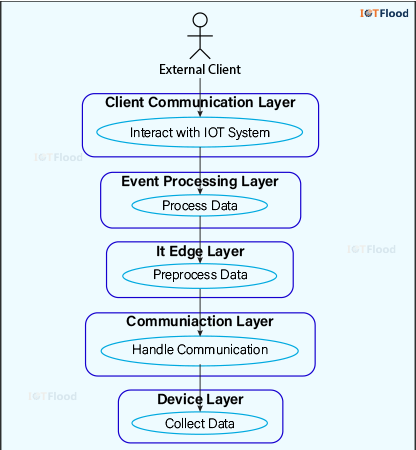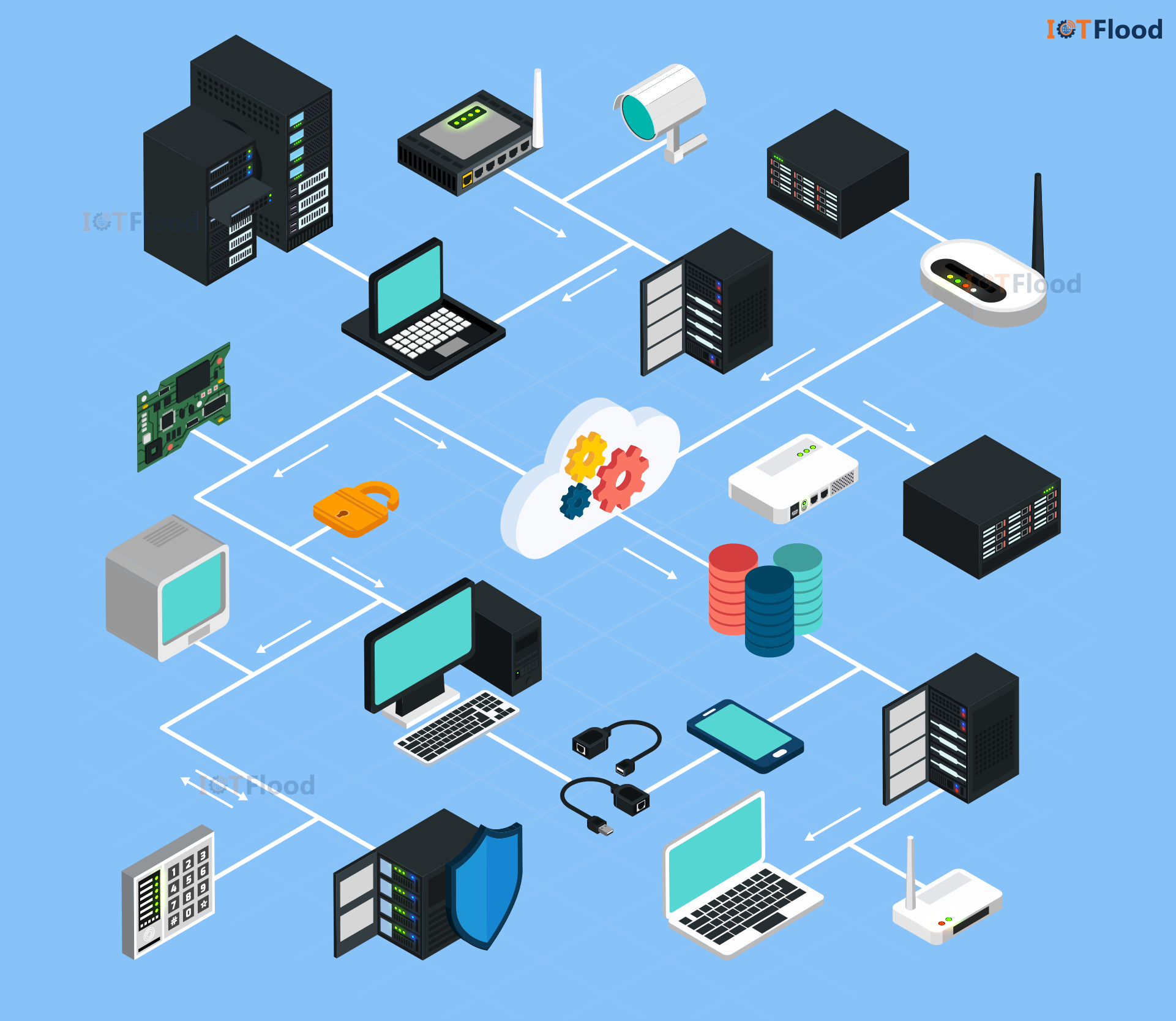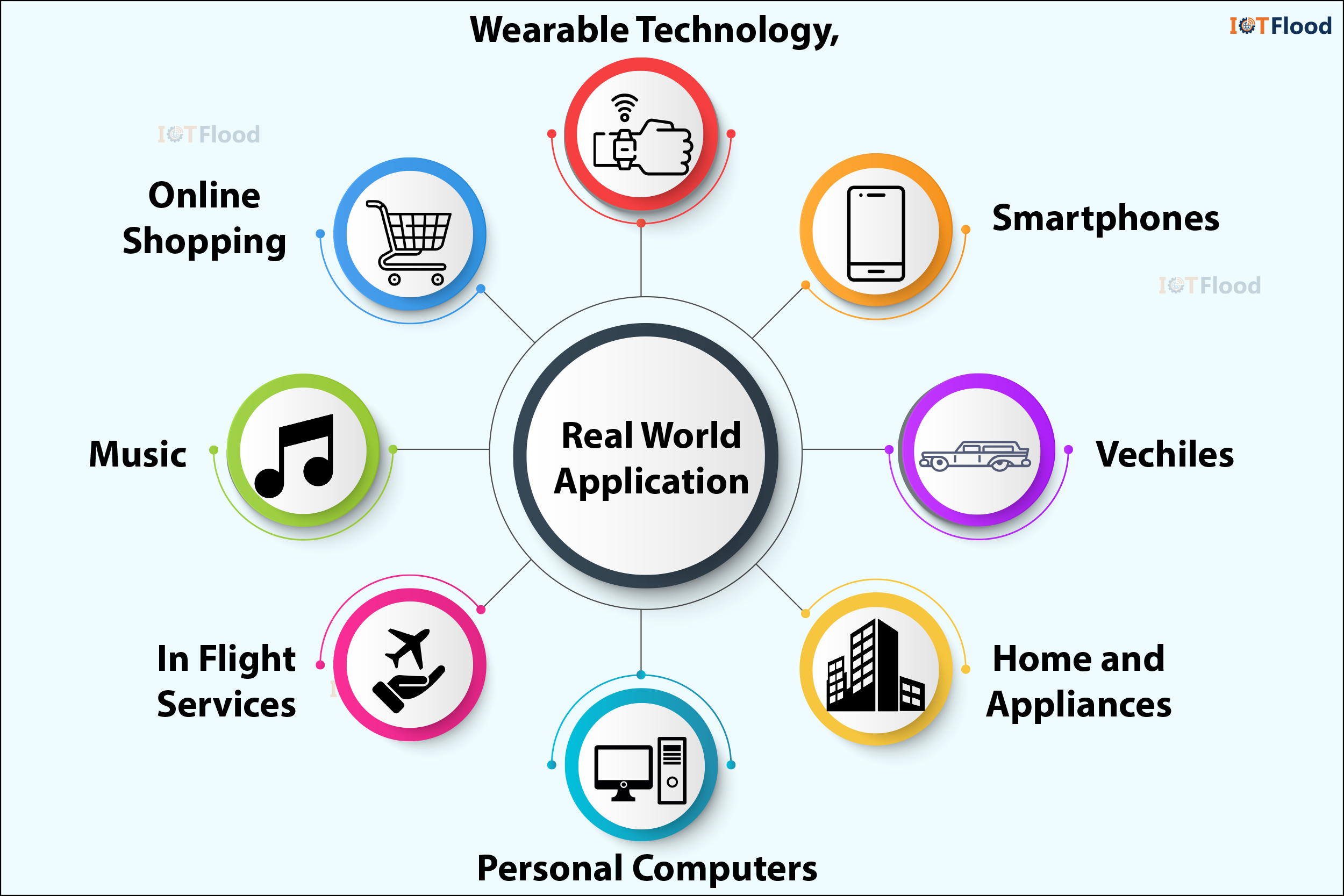How IoT Devices Capture and Transmit Data
In the age of interconnectedness, the rise of IoT (Internet of Things) gadgets has entirely altered how we interact with our surroundings. These devices—from wearable fitness trackers to smart thermostats—smoothly gather and transfer data, enabling various applications across multiple industries.
The Internet of Things (IoT) has entirely transformed how data is collected and transmitted, opening up many possibilities in various sectors. However, how precisely do IoT devices collect and send data? To fully utilize this technology, it is essential to fully understand the data collection and transmission processes of IoT devices. This article will explore the complex mechanisms underlying this incredible work of technology.
Understanding IoT Devices
At their core, IoT devices contain sensors that collect data from their surroundings. These sensors might be as basic as temperature or as complex as motion detectors and sophisticated cameras. Every sensor serves a defined function and gathers information relevant to its designated function.
These sensors serve as the sensory organs of IoT devices, providing a constant stream of data that powers the networked ecosystem, whether monitoring the surrounding temperature swings, recognizing motion patterns, or recording visual imagery. These sensors allow IoT devices to see and comprehend their surroundings through their accurate measurements and detailed observations, opening up a wide range of applications across various industries and domains.
IoT Architecture
To fully understand how IoT devices collect and transmit data, we need to understand the architecture of IoT. To enable data collection, the Internet of Things architecture is composed of five primary layers:
1. Device layer: This layer consists of the event processing layer and the devices that exchange data with one another. These gadgets track and exchange data from linked devices through sensors that are either built into them or attached to them externally.
2. Communication layer: This layer builds the network that enables communication between systems and objects. Devices interact with one another using protocols like MQTT, CoAP, and HTTP/HTTPS.
3. IT edge layer: This layer consists of the device hardware, the installed operating system that executes and manages operations, and the device firmware, which is coded onto the device and provides functioning instructions. The edge layer carries out activities related to sensing.
4. Event processing layer: This layer is made up of systems that clean, organise, manipulate, store, and analyze all of the data transmitted from IoT devices to produce insights. An AI-based diagnostic tool for asset maintenance is a good instance.
5. Client communication layer: This layer provides data and insights to IoT system users.
Data Collection
Data collection is one of the most critical steps in transferring information from the real world into a digital representation. It begins with activating sensors, which operate as the primary detectors of external inputs. These sensors can work continually, like a temperature sensor monitoring the surrounding air temperature or a motion detector activated by movement in reaction to predetermined events. No matter how they function, sensors are skilled at catching environmental changes, such as differences in motion, temperature, or humidity levels.
Sensors quickly convert these changes into electrical signals upon detecting them, acting as an intermediate between the digital and physical worlds. After converting environmental changes into electrical signals, the device’s microcontroller or processor processes these signals as the next step in the data collection process. The processing and interpretation of the unprocessed data obtained from the sensors depend on these computational elements.
When it receives electrical signals, the microcontroller or processor uses pre-programmed algorithms to analyze and interpret the incoming data. Depending on the application, this processing might involve eliminating noise, computing additional parameters, or performing specific actions based on preset thresholds. Ultimately, this processing step converts the original electrical impulses into interpretable data representations, allowing further analysis, storage, or action within the digital ecosystem.
Processing and Analysis
Once the raw data is collected, IoT devices often perform initial processing and analysis. This critical stage includes a variety of actions meant to refine the collected data into valuable insights. Initially, the data may be filtered to remove unnecessary or irrelevant information, directing computing resources towards valuable data points.
Furthermore, fundamental algorithms are frequently used to reduce noise and improve the signal-to-noise ratio, guaranteeing the accuracy and reliability of the following tests. IoT devices may also use methods to deriving essential insights from the data they have gathered to make quick decisions and take proactive measures in response to changing environmental conditions.
On the other hand, when IoT devices have limited computing power, they might assign more complex processing jobs to a cloud server or connected gateway. By employing cloud computing resources, IoT devices can access advanced analytics capabilities and fulfil scaling requirements, improving the efficiency and efficacy of data processing and analysis efforts.
Data Transmission
Once data has been processed and refined, the next step involves its transmission. IoT devices use a range of communication protocols and technologies to send data to predetermined locations. Wi-Fi, Bluetooth, Zigbee, and cellular networks are just a few communication protocols. Several factors determine the protocol choice, such as the amount of data to be sent, the necessary transmission range, limitations on power usage, and the accessibility of network infrastructure.
For example, Bluetooth might be more appropriate for short-range communications in close quarters. Still, Wi-Fi might be chosen for high-bandwidth applications where constant access to a local network is necessary.
As an alternative, Zigbee can be used in low-power, low-data-rate applications, which are perfect in situations where energy efficiency is crucial. Cellular networks provide a solid solution when IoT devices transport data over long distances or function in remote regions without consistent network coverage. Ultimately, the best possible data transmission efficiency and dependability are ensured by customizing the communication protocol to the unique needs of every IoT deployment.
Types of Data IoT devices collect.
IoT devices collect a wide range of data, each providing unique insights and functionality to improve operational efficiency and user experience. One common type of data acquired by IoT devices is location data, which allows real-time tracking of assets such as parcels, equipment, and pallets. Businesses may improve logistics operations, inventory management, and supply chain visibility by constantly monitoring and updating location data.
For example, IoT-enabled tracking devices with GPS technology allow firms to track the movement of commodities across the supply chain. This real-time visibility not only improves operational efficiency by lowering the risk of missing or misplaced things but also allows for proactive decision-making, such as rerouting shipments to avoid delays or optimizing delivery routes for optimal efficiency.
IoT devices also record status data in its most unprocessed state, converted into a helpful format appropriate for deeper analysis. The term “status data” refers to a wide range of information about the functionality and state of devices, machinery, or systems. This data could include variables like vibration, temperature, pressure, and energy usage. IoT devices offer valuable insights into the functionality and health of assets by continuously monitoring these variables. This allows for proactive defect identification, predictive maintenance, and performance optimisation. Businesses can detect patterns, trends, and anomalies in status data that can provide helpful insights to improve operational efficiency, minimize downtime, and improve overall asset performance and reliability.
Security and Privacy Considerations
The importance of security and privacy safeguards increases as data moves from IoT devices to their intended endpoints. Data is encoded using encryption methods like AES or RSA, making it unreadable to unauthorized parties. Authentication systems, such as biometric or token-based authentication, confirm the identities of both devices and recipients, ensuring that only authorized users have access. To further strengthen against interception or tampering, secure communication protocols such as TLS/SSL offer encrypted channels for data transmission.
Furthermore, compliance with data protection standards such as GDPR and CCPA is critical. These standards mandate transparent data management procedures and explicit consent mechanisms to protect user privacy. Integrating strong privacy and security measures guarantees the integrity and confidentiality of IoT data at a time when data breaches are a constant concern. This builds user trust and reduces the risks of misuse or unauthorized access.
Data Storage and Management
As soon as the data travels to its destination, it is stored in cloud servers or databases, the first step in data storage and management. Several transformational procedures are applied to the stored data, such as further processing, aggregation, and integration with other datasets.
These procedures are essential for deriving valuable conclusions and helpful intelligence from the unprocessed data that IoT devices gather. Data management approaches such as solid data governance frameworks, strict data quality assurance protocols, and comprehensive data lifecycle management strategies are critical. By ensuring that data is handled and used under established standards and regulations, data governance protects against misuse or unauthorized access.
In the meantime, data quality assurance procedures guarantee the integrity and suitability of the stored data for analytical purposes by verifying its correctness, consistency, and dependability. Data lifecycle management also includes organizing, planning, and managing data from when it is created until it is eventually disposed of, guaranteeing effective use of storage resources while meeting legal and operational requirements. Organizations can fully utilize IoT-generated data to promote informed decision-making, optimize operations, and open up fresh opportunities for innovation and growth by implementing efficient data storage and management processes.
Importance of Data Collection in IoT
Data collecting is at the heart of IoT’s functionality and potential. The collection, transfer, and application of data obtained from diverse sensors and devices constitute the core of the Internet of Things. The data journey in an Internet of Things system consists of three crucial stages: first, data collection via sensors, then transmission for storage and organization, and last, consumption for analysis to derive insights that may be put to use. Maximizing data collection is not only a preference for organizations adopting IoT, but it is also a strategic necessity because it fosters the creation of priceless insights necessary for operational efficiency and well-informed decision-making.
It is impossible to overestimate the importance of reliable data collection methods in the Internet of Things. IoT technology is used by businesses to gather large datasets and maximize their potential. Organizations can unleash various insights, inspire innovation, optimise operations, and obtain a competitive edge in their respective industries by carefully capturing, transmitting, and analyzing data. The continuous flow of data inside an IoT ecosystem enables businesses to extract relevant knowledge, transforming raw data into tangible value and pushing them forward in the interconnected digital era.
Real-World Applications
The extensive use of IoT technology has made an abundance of practical applications in various industries possible. The real-world applications of IoT technology are numerous and ever-expanding, revolutionizing several sectors and everyday lives.
Here are a few well-known cases:
1. Smart Homes: Internet of Things (IoT) gadgets are turning conventional homes into networked, intelligent spaces. Smart appliances, lights, security cameras, and thermostats may be operated from a distance with voice commands or smartphones. This allows households to reduce energy use, improve security, and simplify daily chores.
2. Healthcare: IoT is changing healthcare delivery by enabling remote patient monitoring, telemedicine, and personalized treatment. While medical devices like insulin pumps and pacemakers send critical information to healthcare practitioners in real-time, enhancing patient care and results, wearables like fitness trackers and smartwatches gather health data continuously.
3. Retail: The Internet of Things is revolutionizing the retail industry by giving retailers valuable insights into their customers’ behavior and preferences. Sensor-equipped smart shelves monitor inventory levels automatically, allowing shops to minimize out-of-stock scenarios and optimize stocking. Mobile applications and in-store signals provide personalized shopping experiences, while intelligent checkout systems facilitate payment.
4. Supply Chain Management and Logistics: IoT significantly contributes to the optimisation of supply chain and logistics operations by enabling real-time tracking and visibility of items. Throughout the supply chain, IoT-enabled sensors track shipments’ position, state, and status, improving inventory control, optimizing routes, and facilitating on-time delivery of goods.
These examples showcase how IoT technology revolutionises our lives by increasing efficiency, innovation, and convenience across industries. As it develops, IoT is predicted to have an even greater influence, opening up fresh possibilities and changing the way we work, live, and engage with the world.
Conclusion
IoT devices’ seamless data collection and transmission capabilities demonstrate the convergence of hardware, software, and networking technologies, ushering in a new era of interconnectedness. As a result of these convergences, the global quality of life has finally improved, significantly advancing various industries, from smart cities and agriculture to healthcare and manufacturing. IoT devices have even more potential to be unlocked, promoting creativity, efficiency, and sustainability as sensor technology advances, data analytics grow more complex, and communication protocols become more effective.
However, some critical issues need to be resolved to properly reap the rewards of IoT. Security is still a top priority, necessitating strong safeguards to keep private information safe and stop unwanted access. As IoT ecosystems grow dramatically, scalability becomes even more critical, requiring platforms and infrastructure to handle increasing devices and amounts of data.
Furthermore, interoperability is essential for smoothly integrating and communicating various IoT systems and devices, promoting a unified and networked ecosystem. If these challenges are overcome, IoT will continue to change industries, promote technological advancement, and create a globally connected world with limitless possibilities.


